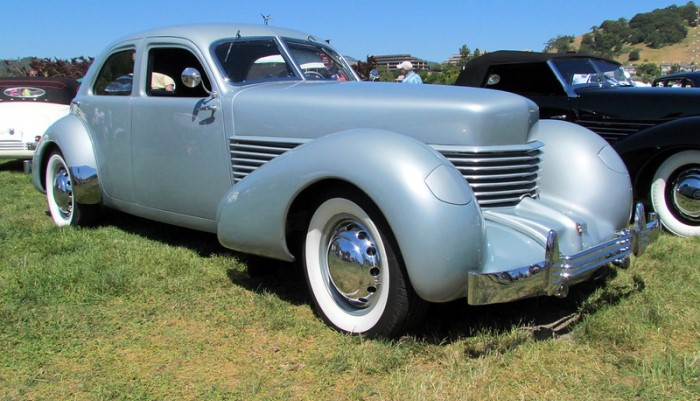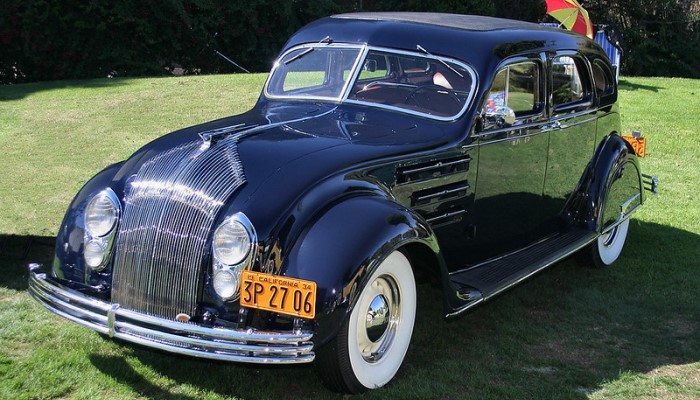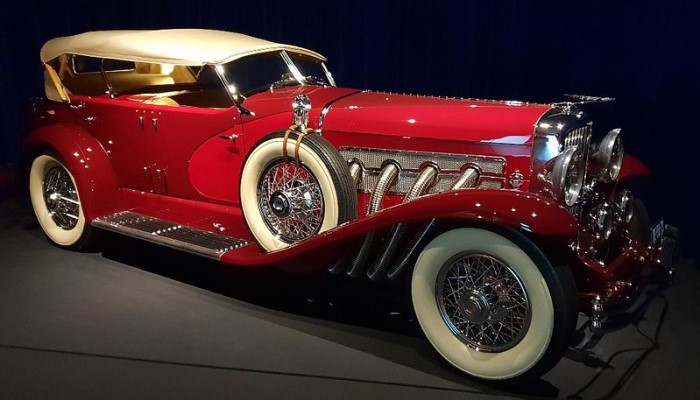Cord L-29
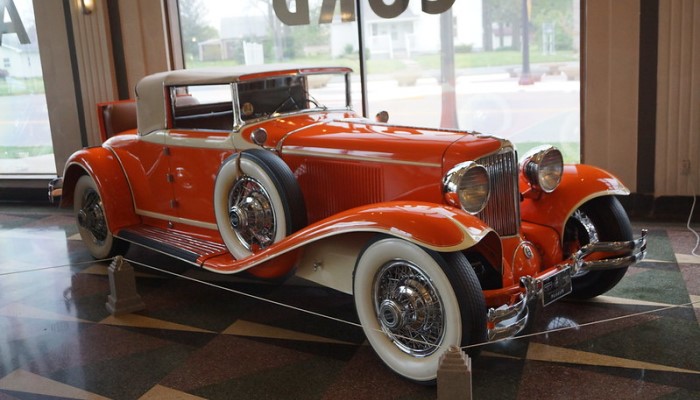
First Front-Wheel Drive System
In the 1926 sports season, Miller's front-wheel drive racing cars won eight times. Erret Lobban Cord, the head of the automotive empire, who decides what kind of car the new Cord brand will be, finally opted for front-wheel drive.
The absence of a cardan shaft made it possible to lower the floor of the body very low and create a swift low and very long silhouette of the car, which was fully in line with the fashion of the late twenties. And advanced technology, in the form of front-wheel drive, promised to attract those who were not chasing fashion into dealerships.
In the middle of 1927, work was started, and five months later a test sample was ready. The basis was a unique frame - without a bend over the rear axle and with an x-shaped cross member set to strengthen the middle part.
In front was an in-line eight-cylinder engine, flywheel forward, in front of it was a clutch, gearbox and differential with final drive.
The rear axle, in the form of a channel curved upwards, was suspended on semi-elliptical springs, the front axle beam, enveloping the main gear housing, was connected to the frame by means of quarter-elliptical springs (two on each side).
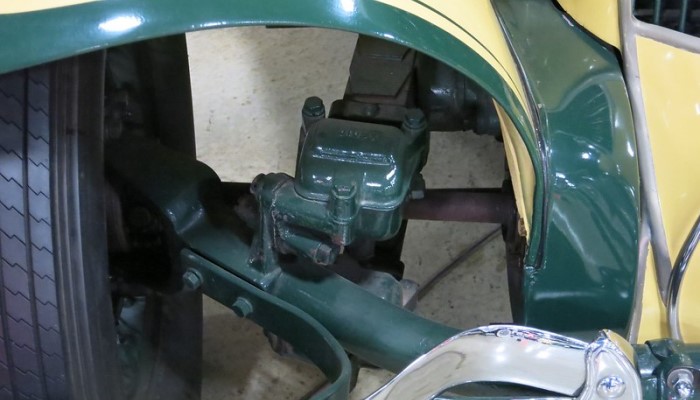
Photo: "1929 Cord L-29" by CapCase
The first tests revealed a huge number of shortcomings - from fuzzy gear shifting to noise in the transmission and vibration of the steering wheel. But the main drawback was the unreliability of the hinges of equal angular velocities.
Despite all the objections of the engineers, Cord, in love with his idea, began work on launching the car into mass production, and in August 1929, the first serial copies came out of the gates of the Auburn factory.
The presentation took place in August 1929. Over the first three days, more than one and a half million people visited dealerships. In the fall, the Cord L-29 was exhibited at European motor shows and elegance competitions.
In the first half of 1930, the car won 39 top awards in Europe. Spoiled by custom cars, Europe applauded the factory design of the L-29. Production of the Cord L-29 was discontinued in September 1933 due to lack of demand due to the Great Depression.
By this time, 4,429 cars had been built, on which were not only the most beautiful bodies painted by Alan Leamy, but also custom-made bodies from American and European manufacturers.
Cord L-29 Engine
The roaring engine nestled within the heart of the Cord L-29 was more than just a machine. It was a symphony of power and precision, an irrevocable force that propelled this legendary automobile into a league of its own.
Crafted with an unwavering commitment to excellence, the engine of the Cord L-29 was a testament to innovation. At its core, a mighty straight-eight cylinder engine breathed life into the vehicle, delivering a harmonious fusion of strength and grace.
This engineering marvel, with its cast iron block, boasted an impressive displacement of 301 cu in (4,934 cc), ensuring that the Cord L-29 was not simply a car, but an embodiment of sheer automotive prowess. With its overhead valve design and an innovative centric crankshaft, the engine of the L-29 held the key to its remarkable performance.
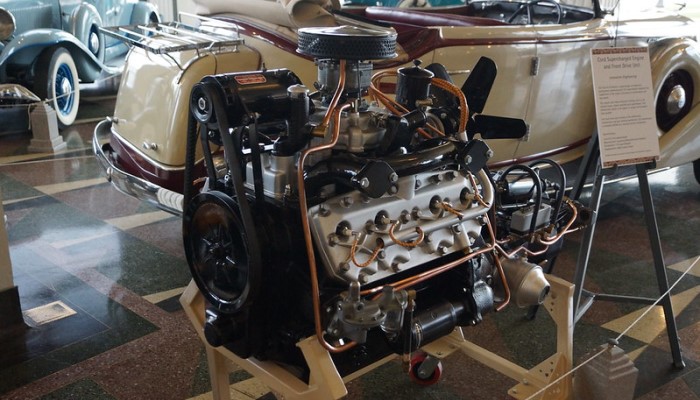
It effortlessly produced 125 horsepower, an astronomical figure for its time, allowing this magnificent automobile to conquer even the most challenging terrains.
As the accelerator was engaged, the engine's symphony enveloped the driver, a melodic combination of rhythmic explosions and mesmerizing harmonies that could only be found within the Cord L-29.
The engine was a true masterpiece of ingenuity, equipped with a supercharger, a feature unheard of during that era. This added a captivating level of potency to the already exhilarating driving experience, propelling the L-29 to new heights of speed and exhilaration.
With every rev, the engine unleashed an elemental surge of power, effortlessly propelling the Cord L-29 forward, as if it were a wild beast poised for capture.
Such was the allure of the Cord L-29, its engine seamlessly blending strength, precision, and elegance. It captured the imagination of all who beheld it, leaving an indelible mark on the annals of automotive history. The engine of the Cord L-29 was not a mere component; it was an irreplaceable soul infused into the heart of this magnificent machine.
Why is Cord L-29 so important?
The Cord L-29 is undeniably one of the most important vehicles in automotive history. With its groundbreaking design and technological advancements, it not only marked a significant turning point in the automotive industry but also established itself as an iconic symbol of innovation and luxury.
First and foremost, the Cord L-29 introduced a revolutionary concept that would go on to shape the future of automobile manufacturing - the front-wheel drive (FWD) system.
While the idea of FWD in automobiles was not entirely new at the time, the Cord L-29 was the first mass-produced American vehicle to incorporate this innovation.
This breakthrough feature not only enhanced traction and maneuverability but also paved the way for many of the FWD systems we see today.
Moreover, the Cord L-29 boasted a streamlined and elegant design that was ahead of its time. Its long and low-slung body, emphasized by sleek, sweeping lines, instantly made it a head-turner.
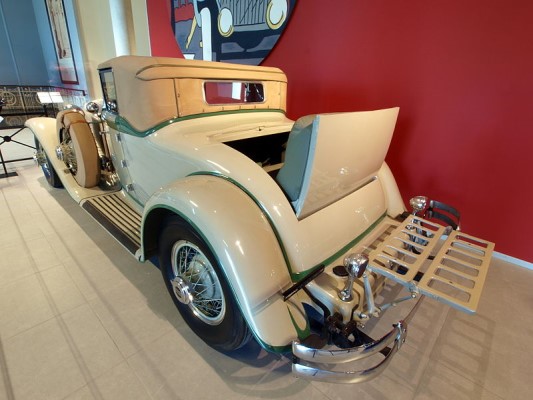
The L-29 also featured a distinctive grille and a distinctive boattail rear end, adding to its overall visual appeal. Its aesthetic appeal, combined with its technical innovations, solidified the Cord L-29 as an icon of luxury and elegance.
Beyond its design and engineering prowess, the Cord L-29 was also a symbol of prestige and exclusivity. It was marketed as an elite vehicle, targeted at the well-to-do and those who craved the ultimate in automotive sophistication.
Owning a Cord L-29 was a statement of wealth and style, as only a limited number of these magnificent automobiles were produced. This exclusivity further enhanced the vehicle's allure and solidified its place in automotive history.
In retrospect, the Cord L-29's significance is indisputable. It revolutionized automotive design, introduced innovative engineering concepts, and established itself as a symbol of luxury and prestige.
While time has passed, and newer generations of vehicles have come into the spotlight, the Cord L-29 remains a cherished classic, forever etched in the annals of the automotive world.
Icon in a Classic Car Market
Despite its limited production, the Cord L-29 has become an icon in the classic car market. Its rarity and groundbreaking design have made it highly sought after by collectors and enthusiasts around the world. In fact, owning a Cord L-29 is often seen as a testament to one's appreciation for automotive innovation and history.
Today, Cord L-29s can be found at prestigious car shows and auctions, commanding jaw-dropping prices. They are admired not only for their beauty but also for their significance in automotive history.
Restored examples of the Cord L-29 are cherished by their owners, who are dedicated to preserving their originality and ensuring their place in the annals of automotive excellence.

Unique Car Zone Team
A group of several fans of everything that moves on four wheels, a few article creators, a couple of marketing strategists, designers, web developers, and lots of coffee.




